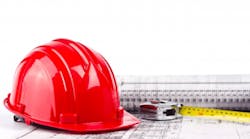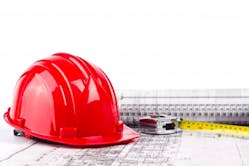Some of my observations/thoughts are:
1.) The kinetic energy of even a small object falling from 500 feet is significant and related to the object’s potential to maim or worse;
2.) I find it helpful to look at the energy involved in this tragedy in terms of other, possibly more familiar, examples. For instance, a 1-pound object falling 500 feet has a kinetic energy about the same as a:
Baseball thrown at 216 mph (Major League fastest pitch is 106 mph).
20 pound sledge hammer with a head speed of 40 ft/sec
Football thrown at 124 mph (NFL fastest pass is 60 mph)
16-pound bowling ball dropped from a height of 31 ft
A calculator like DROPS – The Dropped Object Consequences Calculator can provide a data point for the classification, in general, of the potential consequences of dropped objects.
Using the calculator, along with some estimating and interpolating to account for its limitations, I found that a 1-pound object falling from a height of +/- 100 feet and striking an individual in the head is highly likely to result in a fatality even if the unfortunate individual is wearing a hard hat.
The news story rightfully reinforced the importance of wearing a hard hat in the high-rise construction environment, though the right PPE would not have prevented at least a very serious injury in this case – tragically and unfortunately the result was much worse. The focus/reinforcement that might best help minimize the chance of tragedies like this one in the future, however, might include some combination of:
A site management protocol that ensures everyone who has to occupy areas below elevated work has been appraised of and understands the overhead hazards and mitigations that have been implemented, as well as what is required of them (e.g. , sign in/sign out expectations, traffic and personnel access/egress pathways, PPE requirements, etc.);
Everyone with business below elevated work activities understands the importance of situational awareness and of maintaining a mentality of chronic unease about being there;
Conservative site management/barricading practices that use OSHA, state and local regulations and codes around elevated work as minimum requirements and that also incorporate “what if” scenarios around equipment or tool failures, ricochets, etc., resulting in the safest work environment practical for those below the elevated work areas;
Workers at elevation who follow applicable codes and standards (at a minimum), who maintain uncluttered work areas, who have identified the tasks they have to perform at elevation, who recognize the hazards associated with those tasks and who have put positive and proactive measures in place to mitigate potential adverse impacts to themselves and those who may be in, around, or under their work area;
Tragedies like these reinforce my realization that it’s in my best interest to be alert and to pay attention to my surroundings any time I’m around this type of work, whether it’s overhead construction work or building maintenance activities like window washing. My most significant personal take away from this tragedy is around the importance of situational awareness and, going forward, I plan to renew my commitment to employing a critical, skeptical and questioning eye when I’m around work at elevation.
Where I can, I’ll make it my practice to bypass/take a different route entirely around elevated work. I’ll also question more critically – at a minimum, in my minds eye, and where I can, I’ll question the person responsible – barricading/site management protocols that I don’t think meet muster. Hopefully, by doing these things, I further can reduce the low (but not zero) probability that I’ll be injured by a falling object and, just maybe, I might be able to keep someone else from getting hurt (or worse), too.

